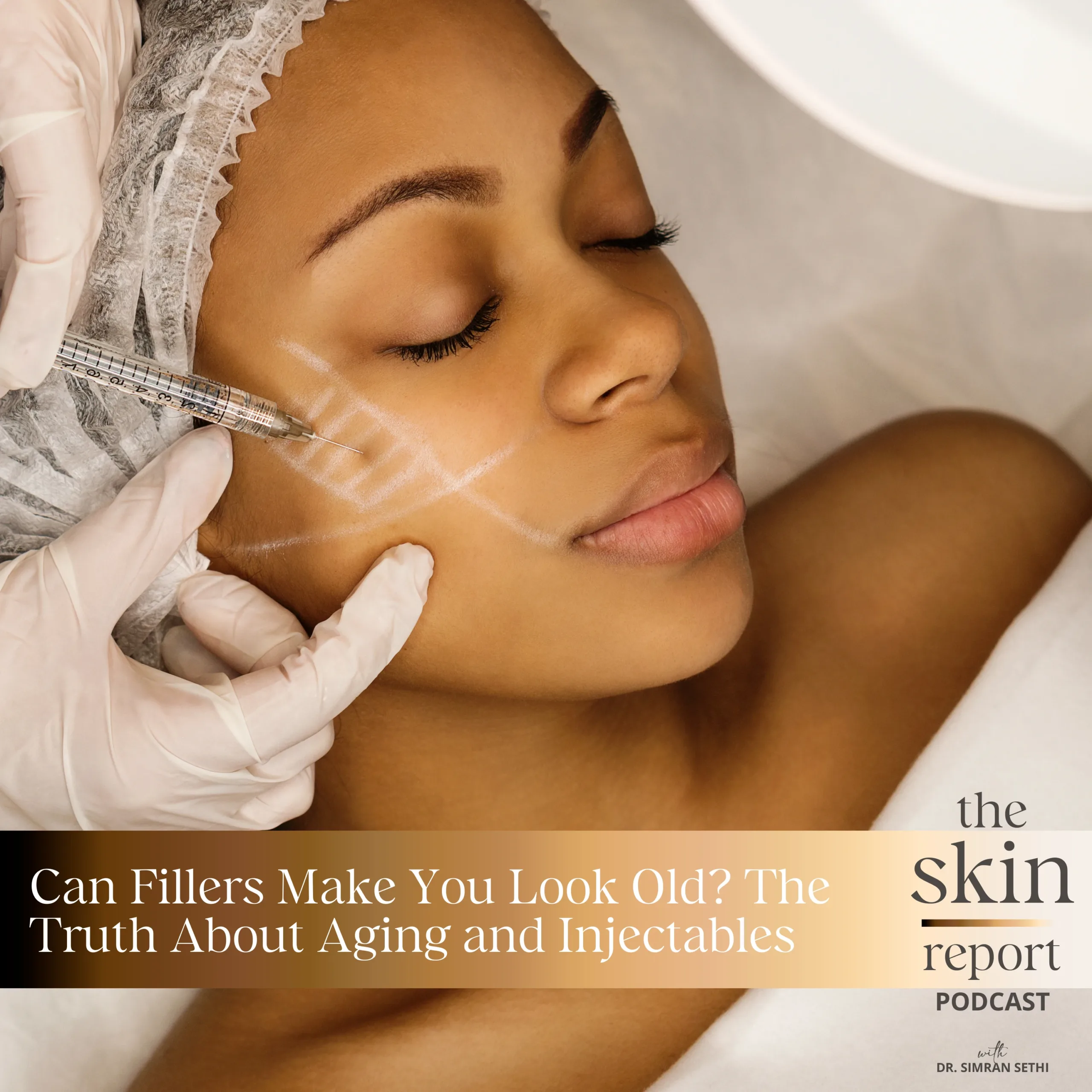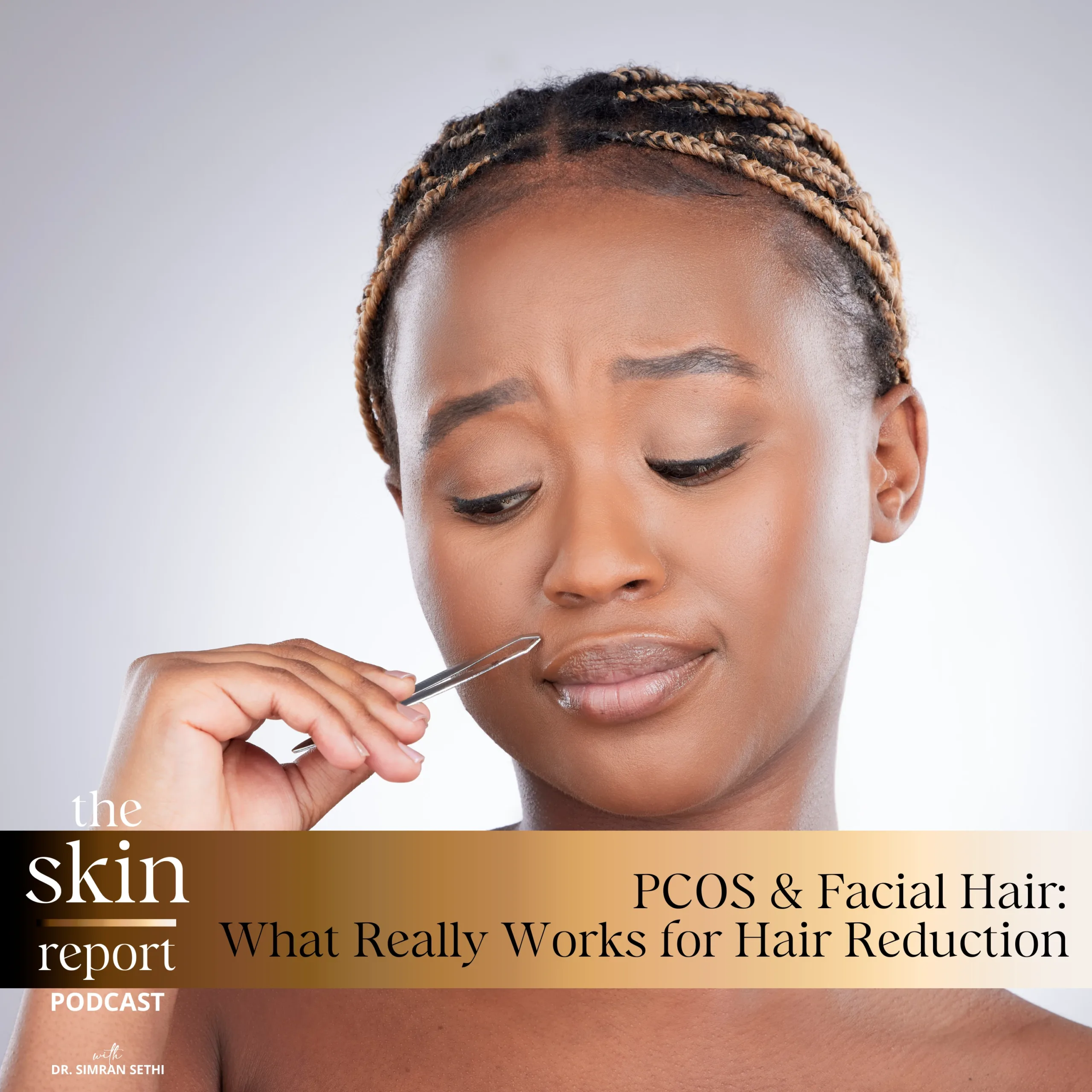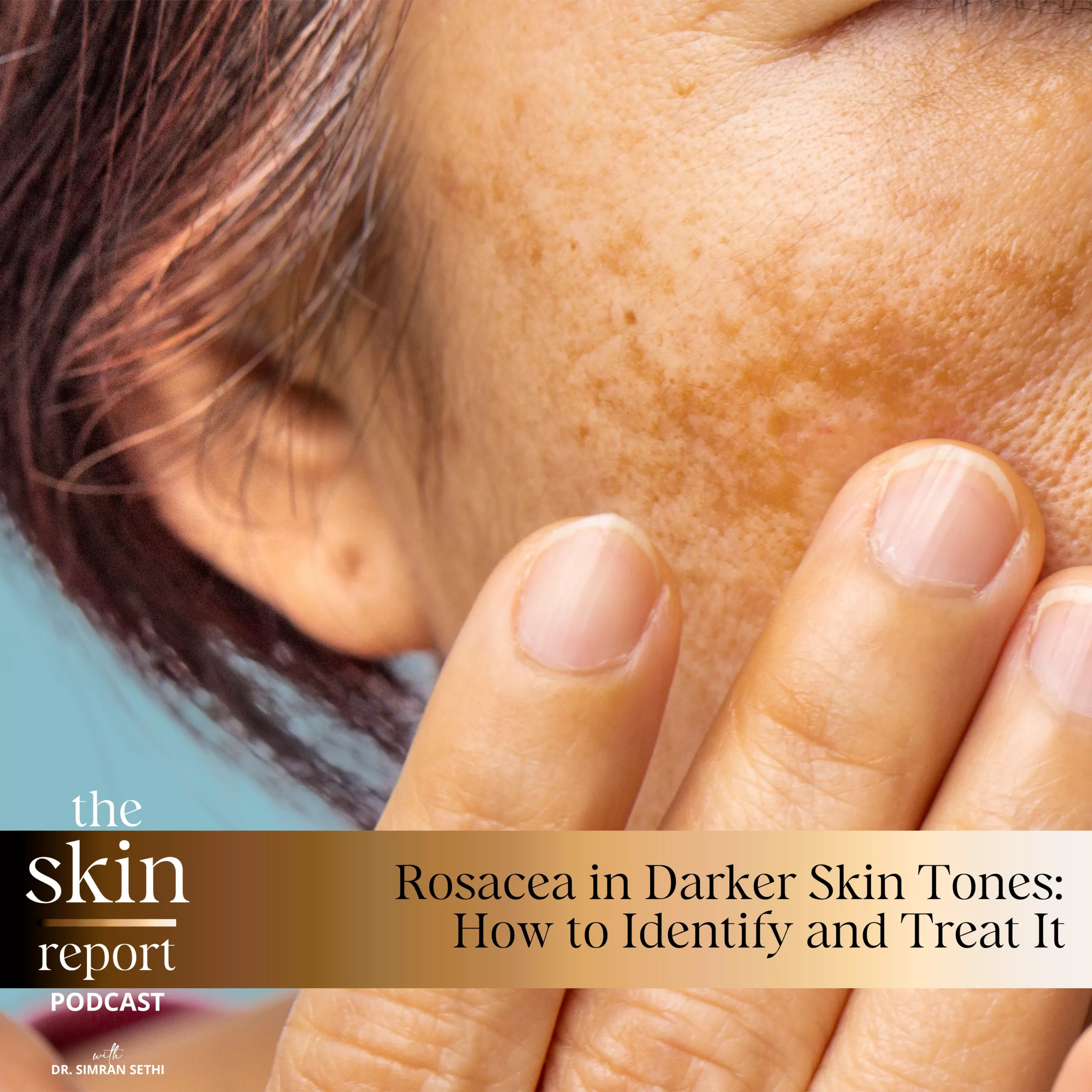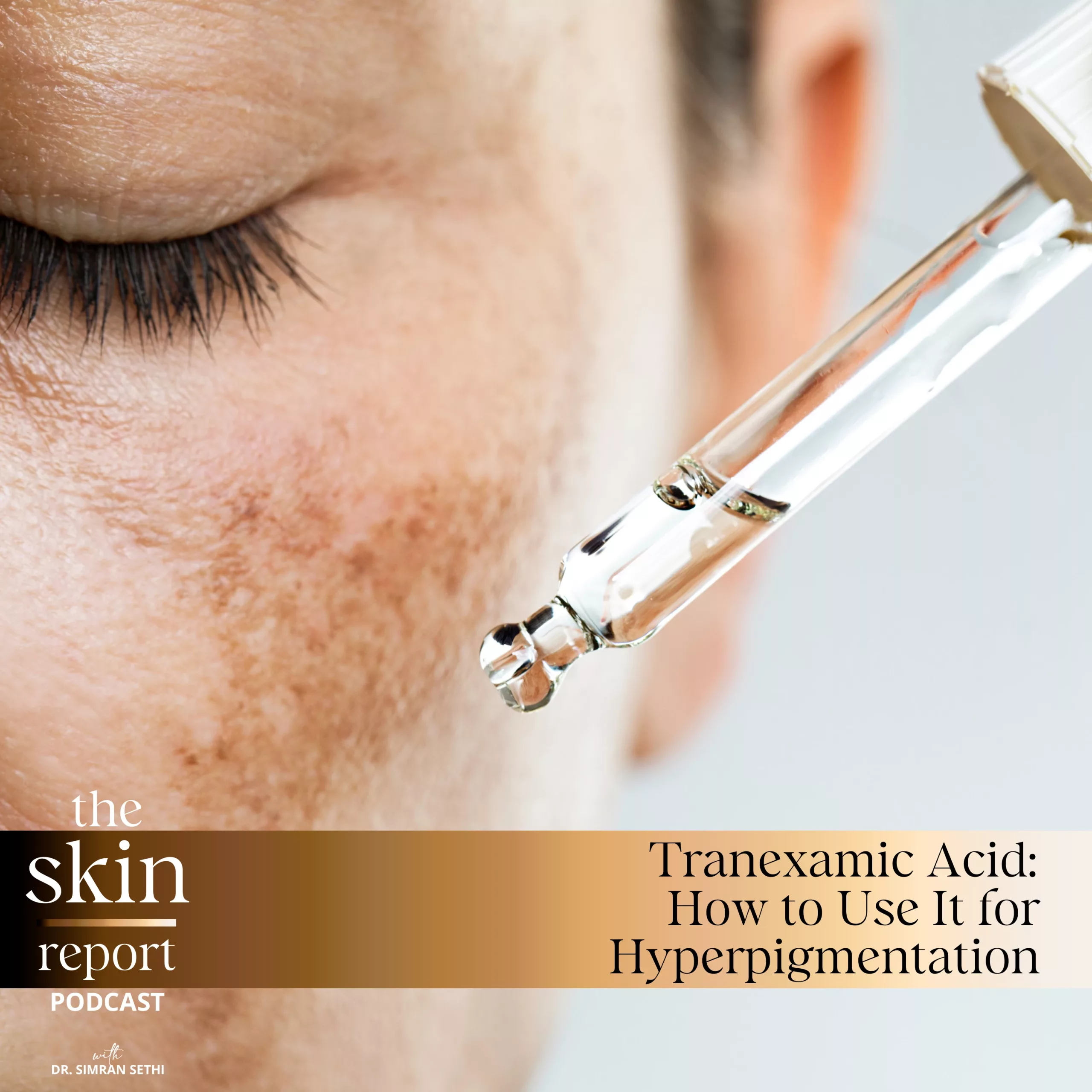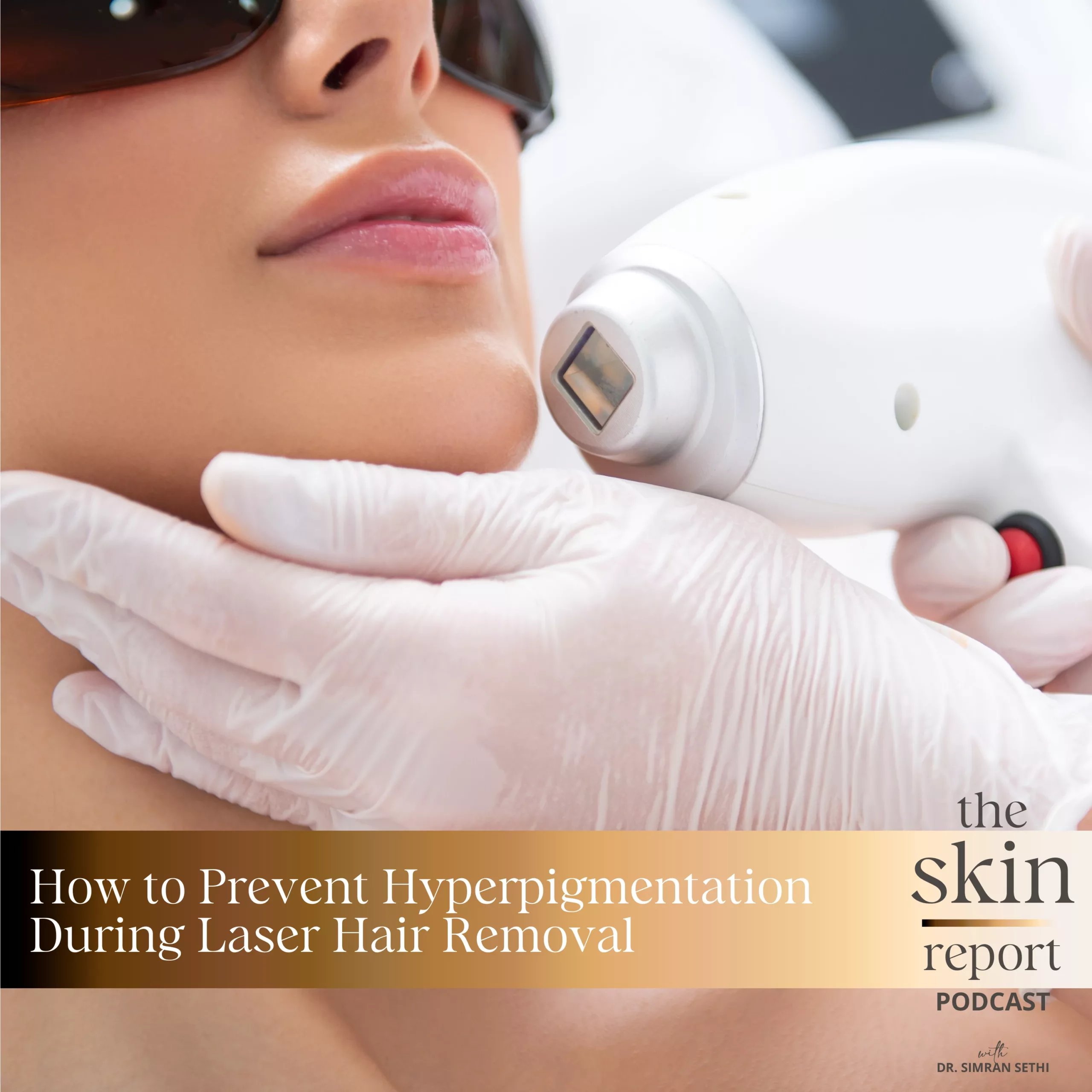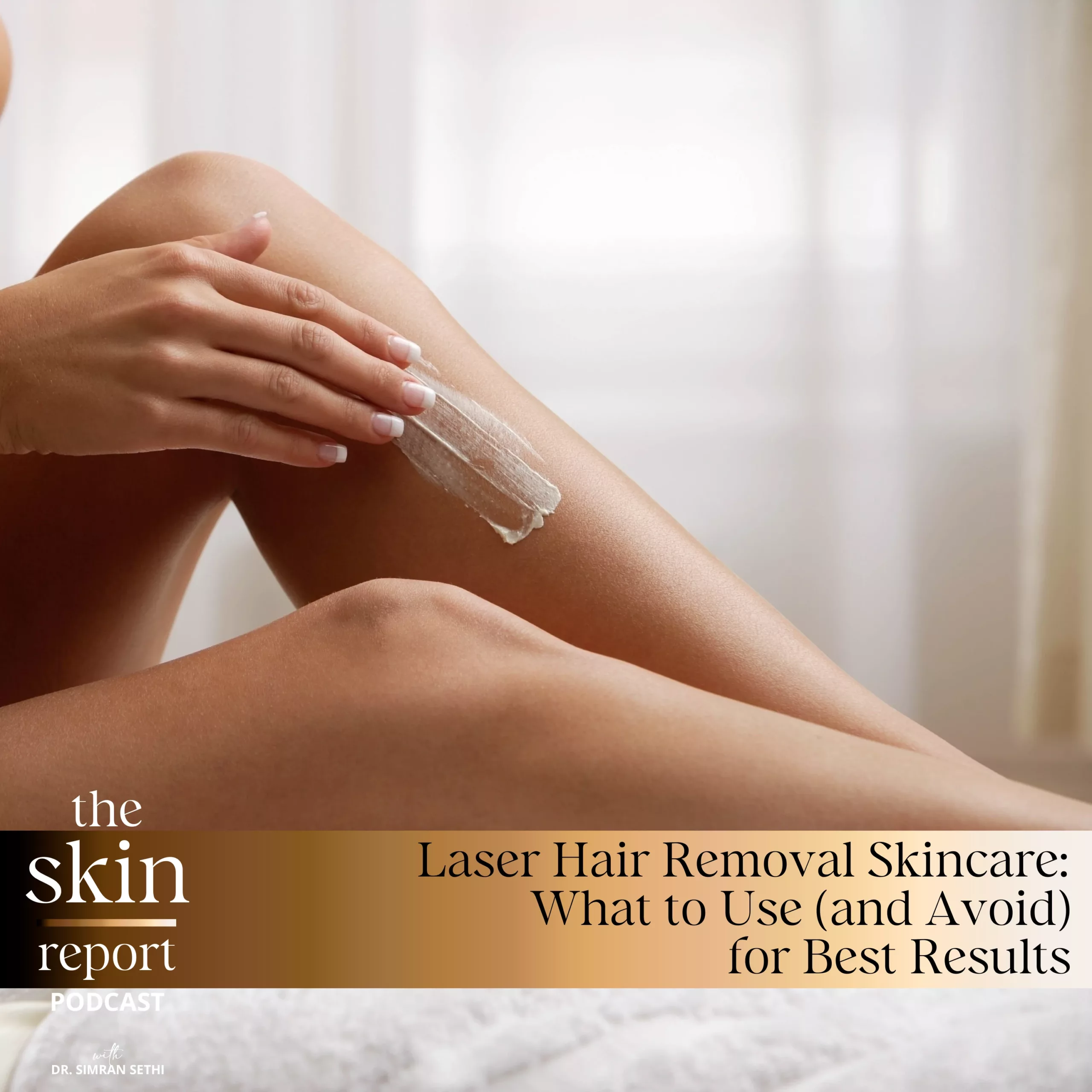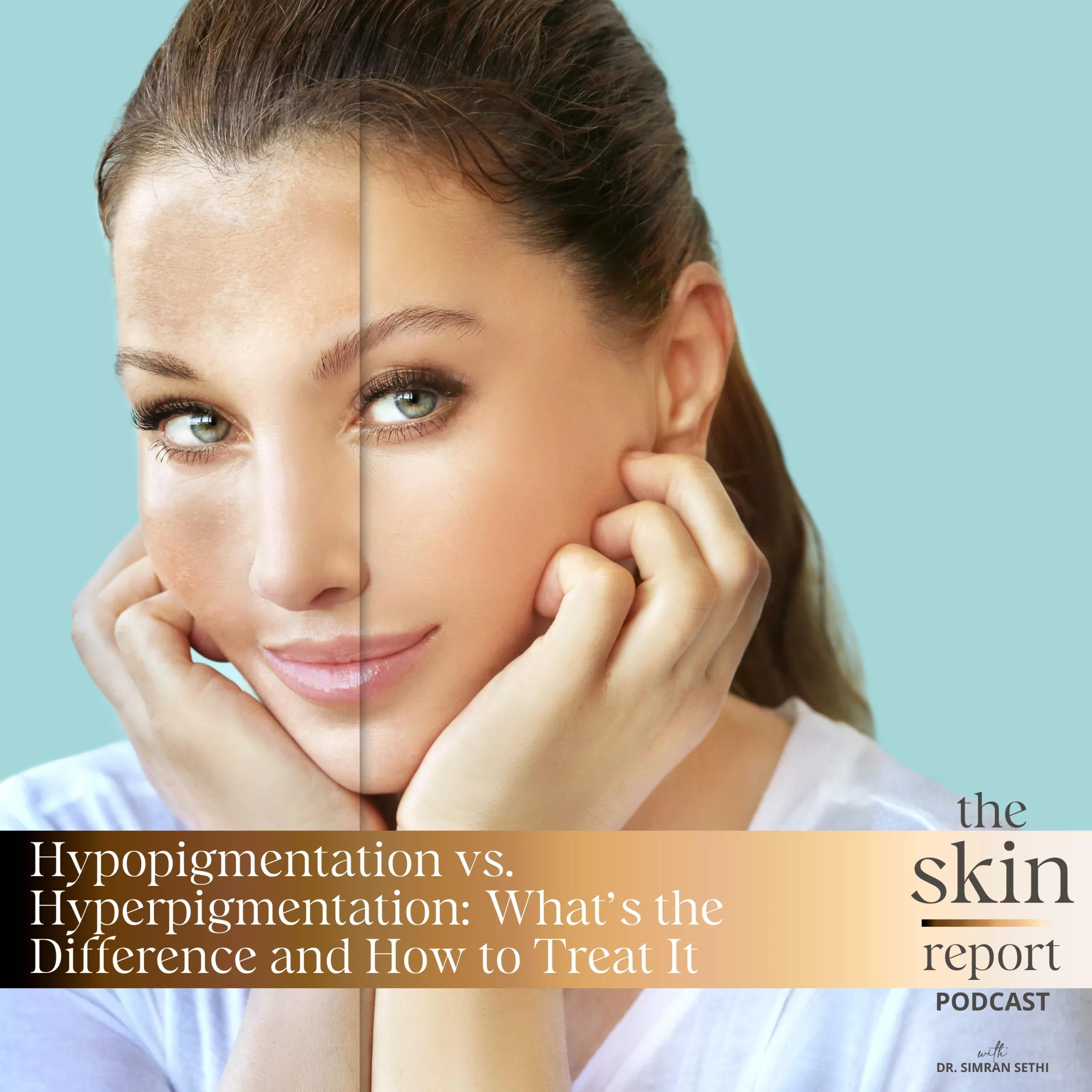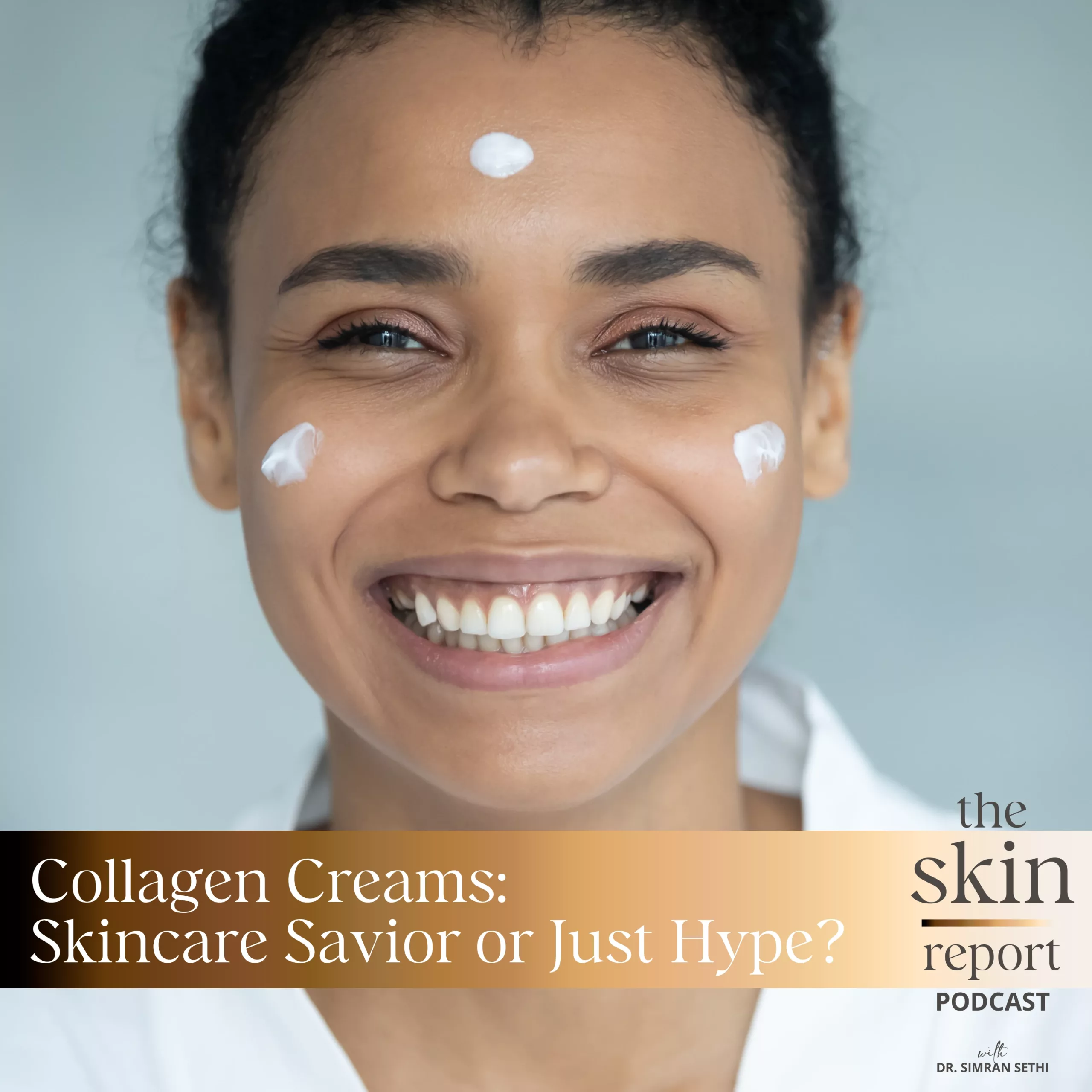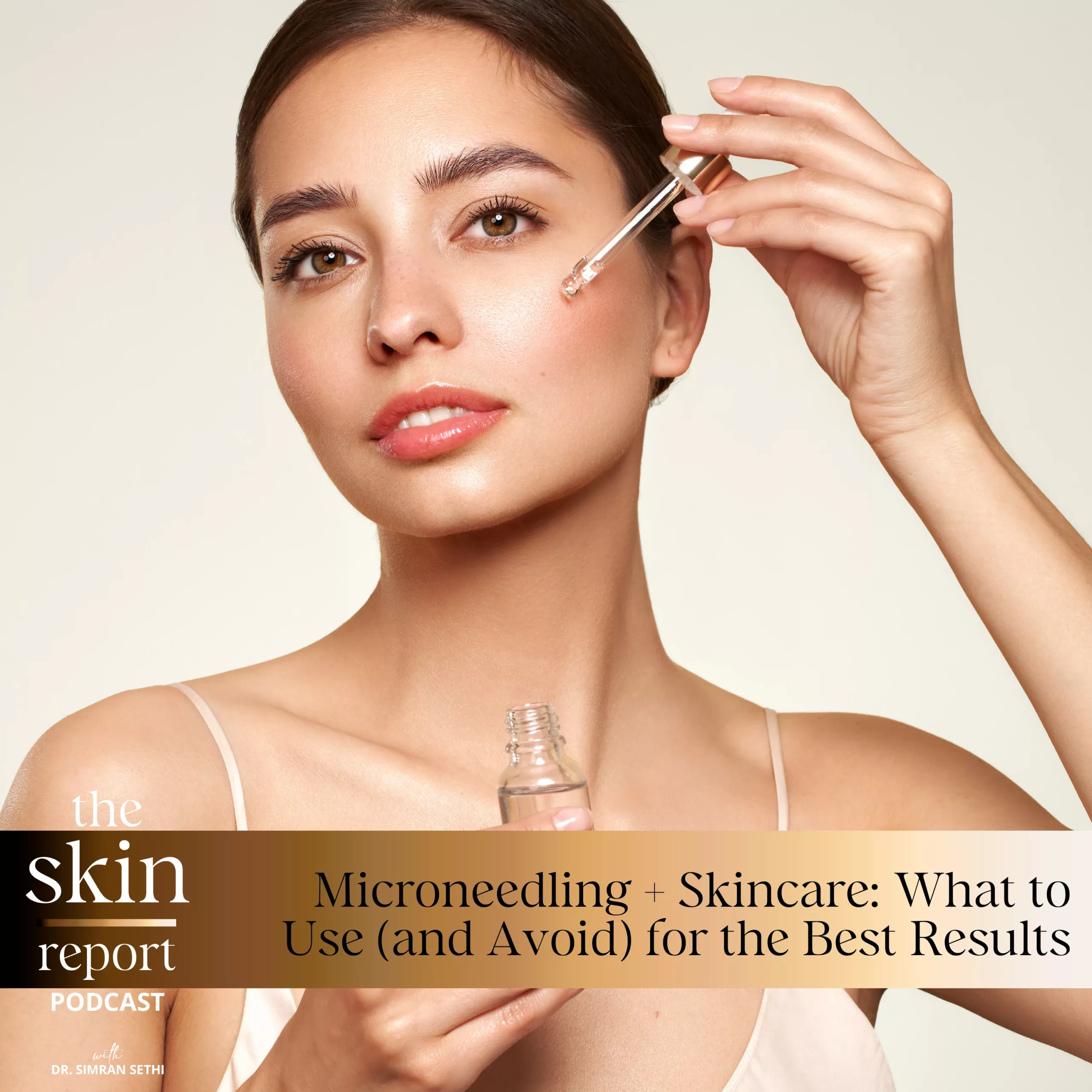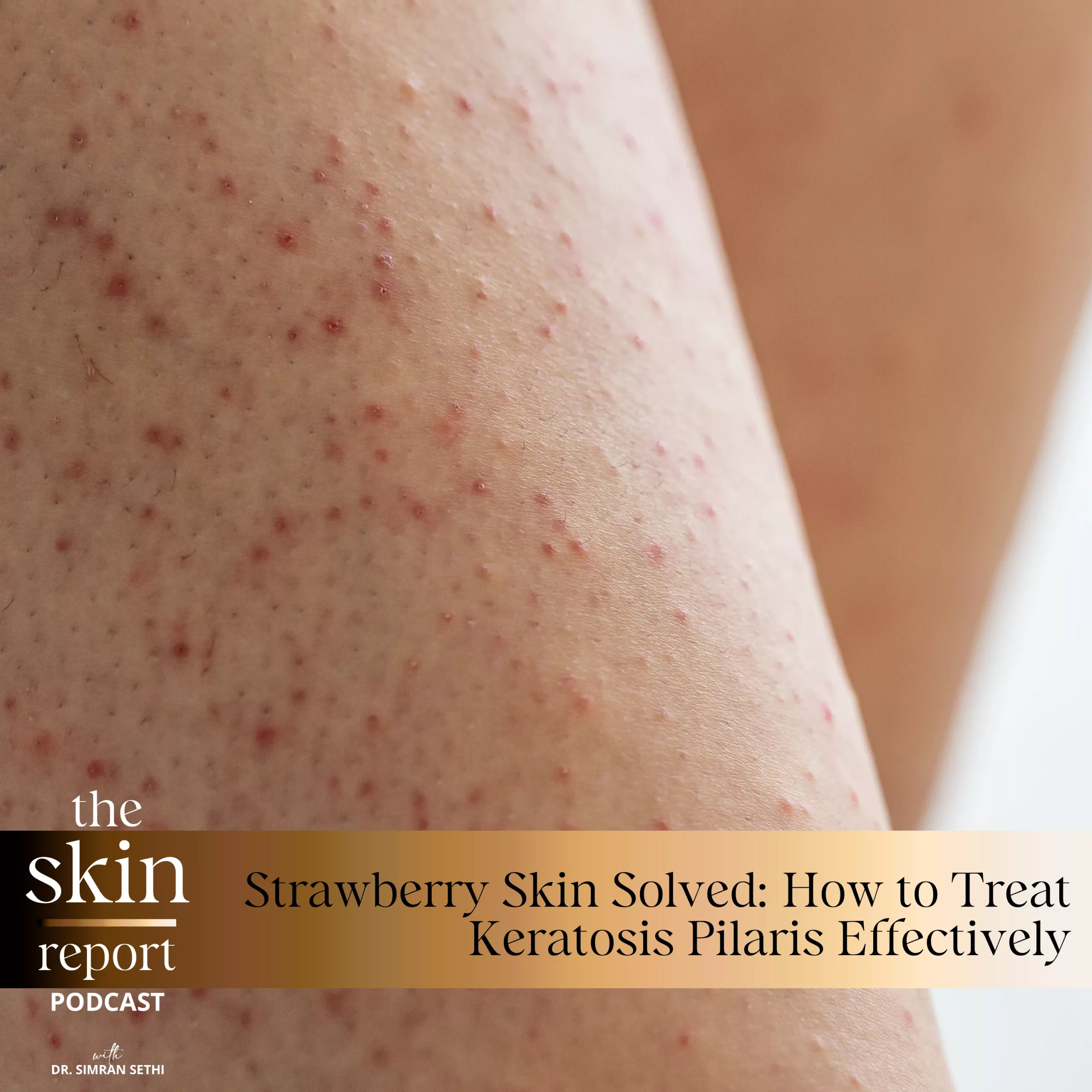Maintaining science-backed knowledge about our bodies can enable us to treat different conditions and concerns when they occur. But unfortunately, melasma is a skin condition that is still under-researched and often misunderstood. So what must people of color know to prevent and treat this common condition in melanated skin?
The Skin Report is a podcast created to educate listeners on methods to improve skin health for people of all ethnicities and ages. This week host Dr. Sethi begins her October series about melasma by providing information about the condition and its occurrence in melanated skin. She covers important topics like common melasma triggers, what causes melasma, and how certain lifestyle choices can affect melasma’s development. So tune in to learn all about the science behind melasma and its occurrence in skin of color.
Beauty Instagram: https://www.instagram.com/renewmd_beauty/
RenewMD Beauty Medical Spas, California: https://renewmdwellness.com/
This transcript was exported on October 3, 2022 -view latest version here.
Skincare can sometimes feel overwhelming, whether it’s finding the right products, ingredients, or treatments. There’s a lot out there, but not always for women of color. That’s why I set out to educate myself and others so that we can all feel beautiful in our skin. Hello and welcome to The Skin Report. I’m Dr. Simran Sethi, an internal medicine doctor, mom of three, and CEO and founder of RenewMD Medical Spas and Skin by Dr. Sethi.
If you’ve been following our show, you may know that we did a four part series in September on skin of color and the skincare industry. I highly suggest going back and listening to that series as we share some valuable insights on racist practices in the beauty industry, common concerns for melanated skin and how to overcome them. For the entire month of October, we will be launching a new series on one of those common yet misunderstood and under-researched skin conditions, melasma. So if you’d like to know more about what melasma is, as well as how to prevent and treat it, keepon listening. You may recall melasma from our pregnancy episode, as it can appear on the skin of expecting mothers. We will dive into who is most susceptible to melasma later in this episode. I’d first like to further define what melasma actually is, as this understanding will help us navigate the topics to come.
Melasma is a fairly common disorder that involves excess production of pigment, sometimes referred to as melanogenesis. This results in dark patches on sun exposed parts of the face, such as the cheeks, nose, upper lip, and sometimes forehead. If you recall from our earlier episodes, our pigment producing cells called melanocytes are housed in the epidermis. This means that the condition starts and predominantly occurs in the most superficial layerof the skin. It’s also most treatable while it’s in that layer, but if melasma is neglected, it will deposit into the deeper layer of the skin, the dermis.
The reason why melasma is so challenging for both patients and practitioners is threefold. First, there are multiple contributing factors to melasma, and we are still learning more about it. A 2021 study published in the International Journal of Dermatology hypothesizes that melasma occurs due to genetics, sun exposure, sex hormones, and other factors. As we discussed in our pregnancy episode, pregnancy can provoke melasma that may or may not fade postpartum. While much progress has been made in the study and understanding of melasma, its complexity still leaves us guessing, even the most educated of us.Hence, why we are doing the series to give you all of the most up-to-date understanding we have of the common skin condition, especially in darker skin tones.
Melasma waxes and wanes and can relapse easily. It can have two stages, active and inactive. During the active stage, the impacted areas of the skin can expand and darken. The patches of pigment can also become red after scratching. During the inactive stage, the affected lesions do not change in size and color. At this point, you’re probably wondering when and why does melasma become active. The three things that trigger melasma to go into its active phase are heat, light, and this includes UVA, UVB light, and visible light, which is abundant in indoor lighting and blue light from electronic devices.And last but not least, increased estrogen levels.
I find in my practice that the most common triggers that make melasma go into its active phase are the summer months, as there is an abundance of light and heat. And for the same reason, melasma tends to be in its inactive phase in the fall and winter months. Many people cycle through these phases but if treated properly, the active phase can be very mild and not cause a lot of hyperpigmentation. This brings me to another point. If melasma can relapse easily, then what is the point of even treating it? While we’re still learning about the condition, we do know that leaving melasma untreated or failing to mitigate and prevent it will cause it to worsen and become even more difficult to treat. Melasma will deposit pigment in the dermis if left unaddressed, and once the pigment is deposited in this deeper layer, it becomes very, very resistant to treatment.
We have so far discussed what causes melasma or at least what factors we know cause it, and the scientific community still has a lot to understand about melasma. We still have steps to take towards understanding why melasma happens. However, we do know who is most likely to experience it. More on that when we return.
Depending on your gender, skin type and age, you may be more or less likely to experience melasma, and this varies greatly. Melasma occurs in 1% of the population. However, it’s present in up to 50% in certain high risk groups. For example, melasma is predominantly present in women. However, the amount of sexual discordance depends on skin type and ethnicity. For instance, even though melasma is very prevalent in South America, where populations are mostly skin type three and four, men account for only 10% of melasma sufferers. However, in India, where most of the population has skin type four and five, studies have reported that up to 32% of patients with melasma are men.
I found the same patterns in my clinical practice. I do see a subset of melasma patients who are men, and these patients are almost always men of Indian or Asian descent. Interestingly, their melasma is also more difficult to treat, but this is more likely because men tend to use less UV protection in their earlier years as opposed to their female counterparts. As you can see, it’simpossible to separate ethnicity and identity from melasma patients, as skin types three to five are most likely to experience it, with skin type four having the highest rates of melasma.
Asian ethnicity are also interconnected. The main age of onset of melasma is 34 years of age. Now, this preponderance also varies based on skin type. The lighter the skin type, the earlier the emergence of melasma is. In melasma patients with skin type three, for example, women from South America, the mean age of onset ofmelasma is approximately 28 years. In women from India or South Asia and other parts of Asia, mostly East Asia, melasma is very prevalent. Many people from these areas can have a skin type of four and five. The mean age of the onset of melasma was 30 years in skin type four and 35 years in skin type five.
Now I also want to clarify something about melasma and age spots. As we age, it’s common to experience sun spots or liver spots on our face, hands, and legs, and these are also caused by longstanding sun damage. These look different from melasma because they’re usually small spots, while melasma presents almost like sharply bordered pigmented clouds on the cheeks, upper lip, and forehead. The other difference is that age spots are a lot easier to treat than melasma and will not reoccur or will reoccur over many years if you have good sun protection, while melasma commonly relapses even when the patient is doing their best to avoid the sun. Overall, melasma is most common in females of reproductive age, as is using oral contraceptive or experiencing pregnancy, menopause, or other hormonal replacement therapy can trigger hyperpigmentation.
A study of 138 Pakistani women compared estrogen levels during various menstrual phases between women with and without melasma. They found that nearly all women with melasma produced greater levels of estrogen in all phases than women who did not have melasma. The melasma group also had greater progesterone levels in over 50% of the study participants. This shows that high estrogen levels and in some cases, progesterone levels, can be one of the factors that promotes melasma. We also know that those who have a first degree relative with melasma are more likely to experience it themselves. They are also more likely to develop melasma earlier in life compared to someone without any family history of it. That being said, the inheritance pattern is polygenic. This means that you will not necessarily develop melasma just because a close relative did.
Wow. We just covered a lot of information. I know that your head might be spinning by all the challenges I’ve brought up when dealing with melasma, but when we return, we’ll chat about things we can do to prevent it in the first place.
Before we get into the steps we can take to prevent melasma, we must first cover the factors that aggravated and why, including light, heat, and inflammation. UV and HUV or blue light or visible light all increased pigmentation in melasma. As we know from our previous episodes, our pigment producing cells are activated by the sun, and as melasma is a pigment-based condition, sunlight and blue light can cause lesions. Melasma in people with darker skin tones can worsen when exposed to even visible light, that’s indoor light and light from electronic devices, compared to those with light skin tones. Heat, including laser therapies, can irritate melasma as well. This is in part why many people of color are turned away from laser therapy altogether. Inexperienced providers do not want to trigger hyperpigmentation. There is a laser therapy that is well studied in melasma called PicoSure laser, and I will give you a lot of detail about it later in the melasma series.
Inflammation, often a result or breaks the skin barrier, can also increase pigment production. When using harsher skin care products, the skin may become more sensitive and dry leading to this inflammation. Serums with high retinol strengths or exfoliants with high chemical concentrations or large particles contribute to inflammation, especially in melanated skin.
So what can we do to avoid these triggers in the first place? As we’ve mentioned on The Skin Report before, we should all be wearing sunscreen every day, rain or shine, even and especially for darker skin tones who are more susceptible to melasma. Reapplication is just as important. I know this can be challenging, but there are certain products that make reapplying easier, such as sunscreen powders or sticks. Say you apply sunscreen in the morning and work indoors but have to drive home in the afternoon. The sunscreen you applied in the morning is likely still active, but maybe some of it got wiped away as you sweat. Reapplying a powdered sunscreen over your face is a great and easy way to add an additional layer of protection in the harsh afternoon sun. Additionally, hats are a great way to offer even more protection from sunlight for both your skin and eyes.
Now, if you are hiking or spending a significant amount of time outside, reapply your sunscreen every two hours for proper protection. For blue light, I would highly recommend getting a blue light protection screen to attach your computer and cell phone screens. This product is inexpensive and depending on the quality of the shield, you can block up to 50% of blue light exposure. It’s also a great way to protect your eyes from eye strain and reduce the risk of more gradual but serious eye degenerative issues.h For inflammation, staying informed as a beauty consumer can help you avoid harsh ingredients for your skin, therefore avoiding irritating your melasma.
Tune into our September series on skin of color to learn more about what steps, products, and procedures are best for your skin tone. When we return, we’ll discuss other ways to avoid or reduce melasma flareups.
Taking a step back from light triggers for a moment, I want to talk about lifestyle. I completely recognize that having a healthier lifestyle is not always easy, especially financially for some people. However, there are certain approaches we can take to help with melasma. While there aren’t direct studies that link melasma and certain lifestyle choices, we do know that getting enough sleep, drinking enough water, and finding ways to de-stress can improve your skin. While there’s little research done on melasma and stress specifically, we do know that stress increases oxidative stress on the molecular level, and oxidative stress can promote melasma flareups. Adding more fruits and veggies into our diets also leads to more balanced skin, and this can be accomplished by shopping for frozen fruits and veggies if fresh produce is too expensive.
Other than these general life improvements, I’m a huge fan of an oral supplement called Heliocare. It’s a natural fern an extract that reduces inflammation and increases antioxidant repair, almost like an oral sunblock. You still need to wear sunscreen when taking Heliocare, though it does add an extra layer of protection. I personally love taking Heliocare, not because I have melasma, but because I spend a lot of time in my car and get a decent amount of sun exposure. Ever since I started taking Heliocare, I no longer have any tan lines, even in areas where I have not applied sunscreen. In fact, I retail Heliocare Ultra in my offices, as it is a great oral supplement to give extra antioxidative power to your skin and help it reverse UV damage.
Now, studies have shown mixed results, with none showing worsening of melasma, but only some showing statistically significant improvement. However, I think the potential gains from incorporating it into your life are worth it. Heliocare is safe to take daily and indefinitely. It’s commonly used for patients who have an increased risk for skin cancer, and many have safely taken this supplement their entire adult life.
Before we wrap up this episode, I want to takea minute to emphasize something I tell all my melasma patients. I know that melasma is frustrating and we don’t have any permanent safe treatments for it, which means it relapses frequently. It’s normal to feel discouraged and hesitant to do anything about it when I talk about this. I truly get it. This is not what anyone with any skin condition wants to hear. However, if you do nothing about your melasma while it’s in the epidermis, where it’s most treatable, the pigment will continue to build and depositin the dermis, as we discussed. When it’s in the dermis, it will appear darker and become more difficult to treat. This is why it’s crucial to understand that the sooner you start treating, the more successful your treatment will be. So let’s face the issue head on together and as more research comes out about melasma, we will cover it on The Skin Report so that you can have the most up-to-date and scientifically backed knowledge about this condition.
If you’d like to learn more about science backed skincare or medical aesthetic treatments, please subscribe to and turn on notifications for The Skin Report so you always know when a new episode is up. We have a newsletter that you can sign up for on theskinreportbydrsethi.com so that you can stay up to date on all our new episodes, blogs, products, and more. Additionally, if you have a skincare question or want to make an episode topic recommendation, please message me at theskinreportbydrsethi.com, which is linked in my show notes and I’ll be sure to answer your question in an episode soon. Thanks for listening, and until next time, love the skin you’re in and celebrate your beauty.
Transcript by Rev.com


